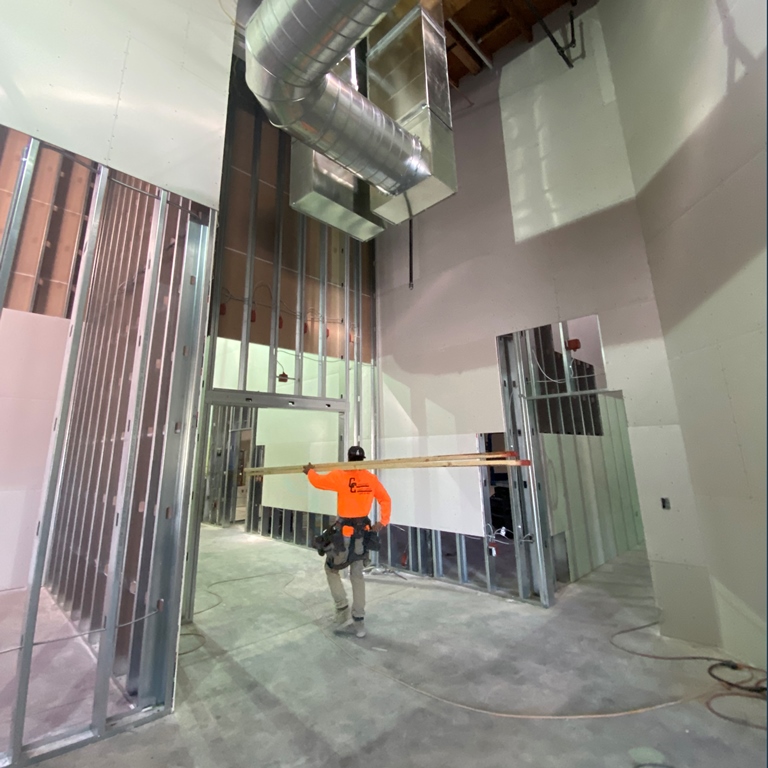EducationARCHITECT
EducationARCHITECT
ADDRESSING THE DESIGN NEEDS OF TODAY’S INDEPENDENT SCHOOLS
Spring 2020 – Volume 20 Number 3
In The Summertime!
In The Summertime!
In The Summertime!
When the Weather Is Fine
When The Weather Is Fine
When the Weather Is Fine
COVID-19 sidetracked most 2020 plans. By mid-March, instead of finalizing Summer construction goals, everyone exited bricks and mortar campuses and transferred to virtual instruction. While teachers, students and parents have adapted, the tangible benefits of in-person instruction have led schools to initiate reopening as early as possible.
During the past few months educators have reassessed all aspects of school operations - addressing physical distancing and instituting cleaning and hygiene protocols.
As schools reestablish in-person education, a normalcy (of sorts) is returning. And with that comes the return to on-going planning – including facilities changes from minor room modifications to re-imagining how the physical environment can expand learning opportunities.
The Summer-break provides an extended period for schools to undertake construction projects. Many take advantage of this time - and cross their fingers that the campus will be ready for the start of school in the Fall.
This issue of EducationARCHITECT discusses the decision-making and design activities that lead to that one afternoon in June - when the last student departs and the construction crews arrive.
There are number of tasks that schools must tackle before the first spade of dirt is overturned. These include Needs Assessment, Entitlement, Plans, Permits and Contractor Selection. Each of these steps take time and effort and all are critical to achieve a successful project completion.

Construction of Buddha's Light Cultural Center for Hsi Lai Temple. Interior Architectural Design by Pica + Sullivan Architect
"The Summer-break provides an extended period for schools to undertake construction projects."
NEEDS ASSESSMENT: Every journey starts with a first step and in the case of the summer project that involves determining the needs as they relate to the physical environment. One approach is to take stock of what exists. This is often done by analyzing the life expectancy of building components and prioritizing replacement.
While important information, it only addresses the status quo. Roof repair, carpet installation, re-painting and tile repair should be on-going maintenance endeavors. And doing this work during an extended break is appropriate. But a truly transformative summer project is one that creates space to augment the academic experience.
To that end, the best approach is to initiate a needs assessment discussion with all of the campus constituencies. Faculty, staff, administrators, parents and students are on campus everyday and have valuable perspectives as to what works and what should be changed. While needs assessment can often lead to grand schemes, focused discussions can identify smaller projects – those featuring improvements that extend learning opportunities. The limitation is that the construction must be accomplished in the three-month Summer timeframe.
ENTITLEMENT: Very few jurisdictions have zoning classifications that allow schools by right. Schools can be located in most zones under the auspices
NEEDS ASSESSMENT: Every journey starts with a first step and in the case of the summer project that involves determining the needs as they relate to the physical environment. One approach is to take stock of what exists. This is often done by analyzing the life expectancy of building components and prioritizing replacement.
While important information, it only addresses the status quo. Roof repair, carpet installation, re-painting and tile repair should be on-going maintenance endeavors. And doing this work during an extended break is appropriate. But a truly transformative summer project is one that creates space to augment the academic experience.
To that end, the best approach is to initiate a needs assessment discussion with all of the campus constituencies. Faculty, staff, administrators, parents and students are on campus everyday and have valuable perspectives as to what works and what should be changed. While needs assessment can often lead to grand schemes, focused discussions can identify smaller projects – those featuring improvements that extend learning opportunities. The limitation is that the construction must be accomplished in the three-month Summer timeframe.
ENTITLEMENT: Very few jurisdictions have zoning classifications that allow schools by right. Schools can be located in most zones under the auspices of a planning entitlement commonly called a Conditional Use Permit. The permit typically establishes limits on area and height, classrooms, parking, and hours of operation. These conditions are intended to address potential conflicts with the immediate community. Adding square-footage or changing the use of a campus space may (and this is the operative word) initiate an entitlement update or planning action.
Since entitlements are time consuming, costly and invite public comment, it is important to open a dialogue with the local officials when the proposed scope of work is conceptualized. If the intended improvement triggers a planning action, the entitlement process will (another operative word) affect the construction start date. The endeavor may still be a Summer project – it just won’t be starting this coming Summer!
of a planning entitlement commonly called a Conditional Use Permit. The permit typically establishes limits on area and height, classrooms, parking, and hours of operation. These conditions are intended to address potential conflicts with the immediate community. Adding square-footage or changing the use of a campus space may (and this is the operative word) initiate an entitlement update or planning action.
Since entitlements are time consuming, costly and invite public comment, it is important to open a dialogue with the local officials when the proposed scope of work is conceptualized. If the intended improvement triggers a planning action, the entitlement process will (another operative word) affect the construction start date. The endeavor may still be a Summer project – it just won’t be starting this coming Summer!
PLANS: From our perspective this is the fun part. Architectural plans typically require a number of steps. Aside from the initial sketch, there is an iterative process to explore the possibilities. After resolution with the user groups, the plans become more elaborate - developing into a set of instructions for the contractor to follow. The time frame to create a complete set of these working drawings can be measured in months. But finalizing plans does not mean that a construction start is imminent.
PLANS: From our perspective this is the fun part. Architectural plans typically require a number of steps. Aside from the initial sketch, there is an iterative process to explore the possibilities. After resolution with the user groups, the plans become more elaborate - developing into a set of instructions for the contractor to follow. The time frame to create a complete set of these working drawings can be measured in months. But finalizing plans does not mean that a construction start is imminent.

Flintridge Sacred Heart Academy. Architectural Design of the expansion to the Mozilo Family Canter for the Arts by Pica + Sullivan Architects.
PERMITS: The Building Permit process is separate and distinct from a Conditional Use review (though in a familial sense, these two would be considered cousins). The plans are submitted to the local jurisdiction, which assigns "plan checkers" to verify compliance with the building ordinances. The process can be lengthy as it is subject to complications and delays inherent to bureaucracies.
The nuts and bolts involve submitting plans, paying a fee, the initial review, obtaining and addressing plan check comments and corrections, re-submittal and final approval. It is almost never that easy though; the re-submittal may elicit additional comments and corrections (ad infinitum). It is always advisable to have a pre-plan check discussion with the city, ahead of the initial submittal, to identify potential road blocks.
COMPLETION: After the contractor selection it is only a few short steps to construction. Negotiation, contracts, pre-ordering and staging all must precede that mid-June start time. When the celebration of the end of school fades to silence, the race begins to complete construction in time for the Fall term. The year comes full circle. Unfortunately there is not much opportunity to rest on your laurels. By early October the process needs to begin again – setting the stage for the next Summer undertaking!
Pica + Sullivan Architects, Ltd. specializes in master planning, architectural design and project management for non-profit schools, religious institutions, and social service organizations. Our approach includes hands-on principals who are involved in the project from inception through completion; flexible and responsive staff who have a long history with the firm; a value-engineering approach to design where the cost-benefit is considered throughout; contextual approach to design where an architecture unique to the context is developed for each client; understanding of the non-profit client as a multi-faceted group of constituents; and most importantly multiple projects with most clients which demonstrates the level of confidence and trust that is placed in Pica + Sullivan Architects.
